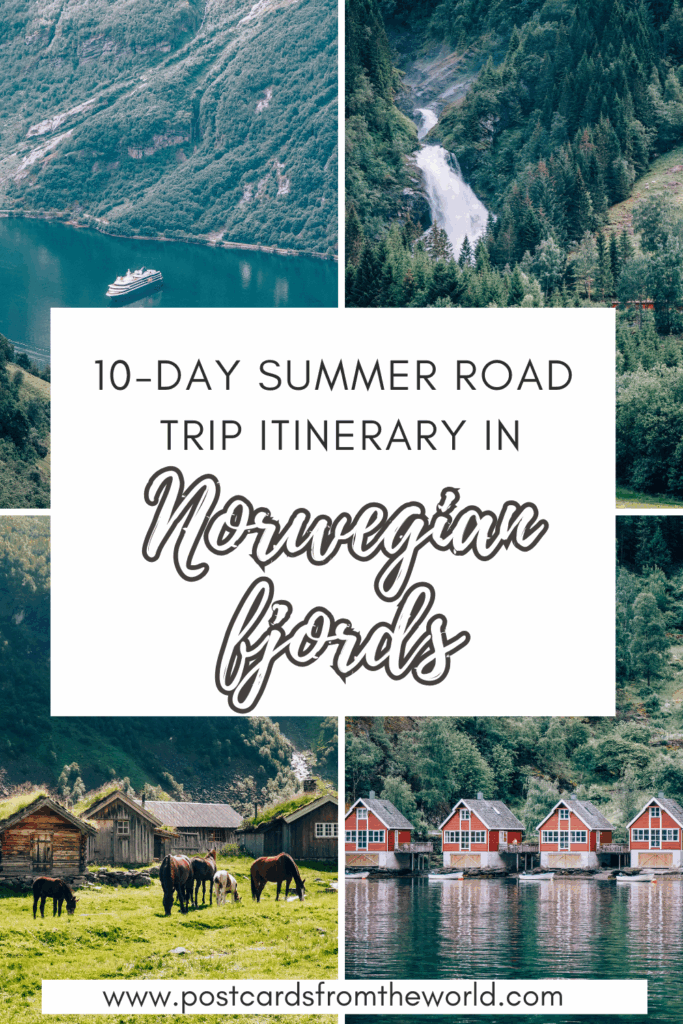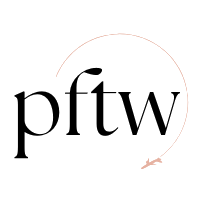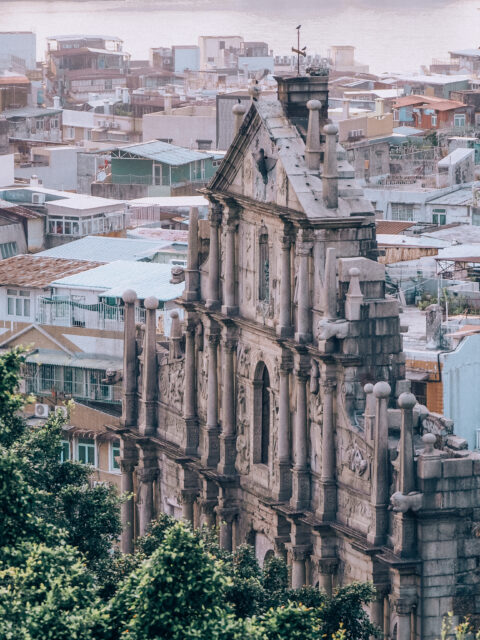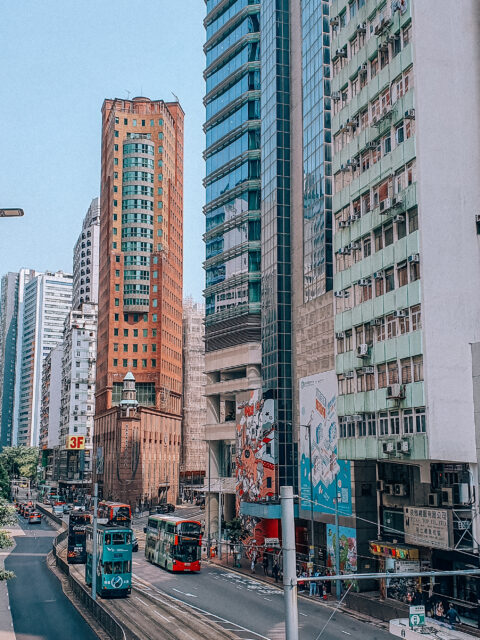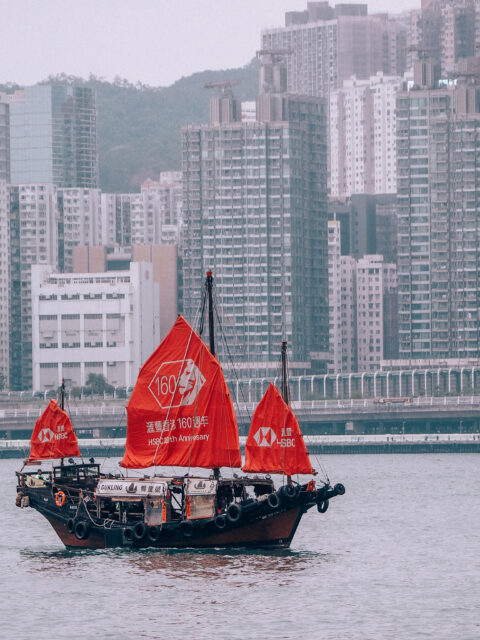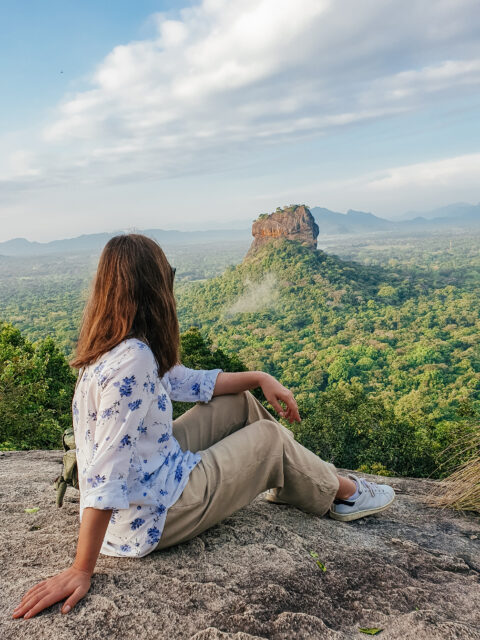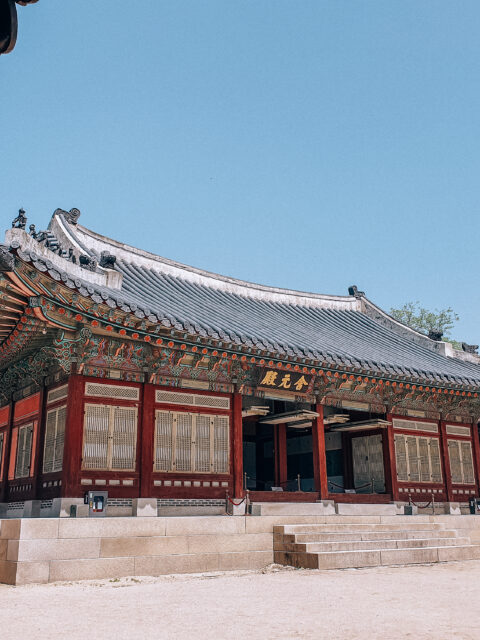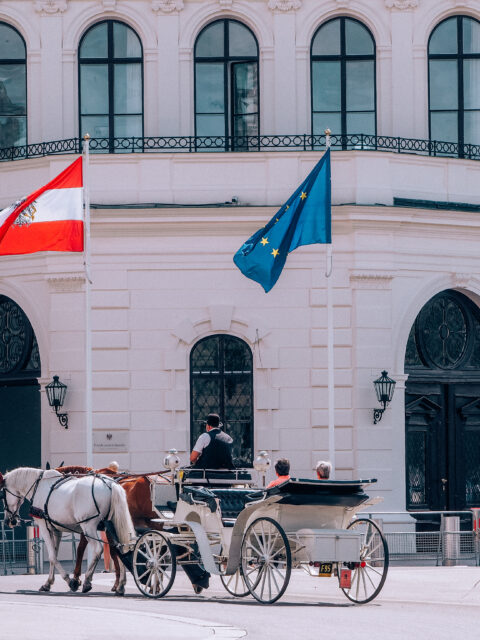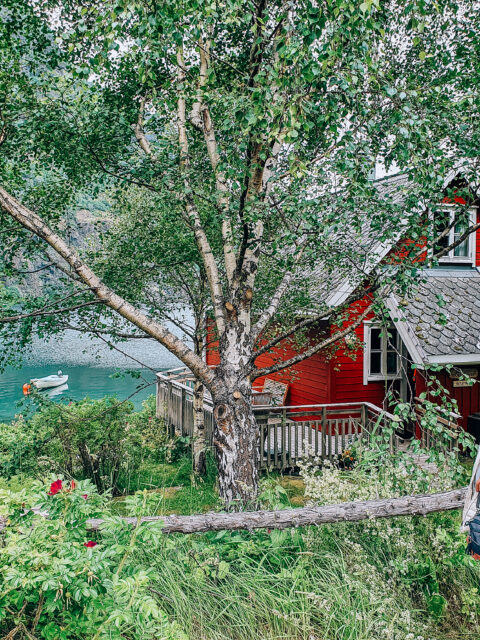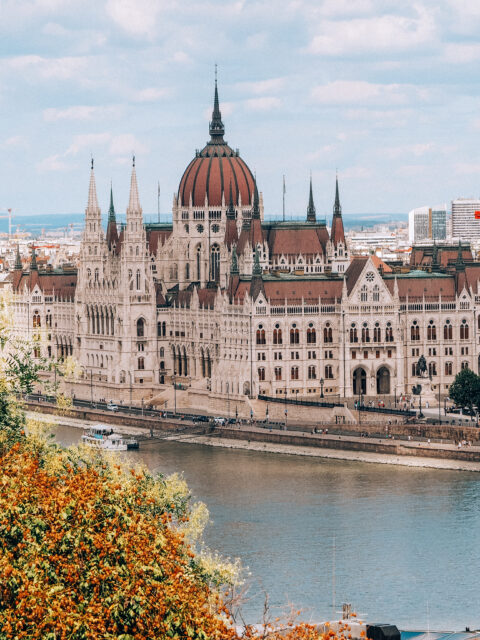Norway Fjords road trip: ultimate 10-day itinerary
A 10-day road trip through the Norwegian fjords is the ultimate way to experience Norway’s breathtaking landscapes, charming coastal villages, and dramatic mountain passes. For me, Norwegian fjord region is a bucket list destination.
From the deep blue waters of Geirangerfjord to the winding roads of the Atlantic Ocean Road, this road trip is one of the most scenic drives in the world. You will see all sorts of waterfalls, hike to panoramic viewpoints, or cruise through mirror-like fjords. This 10-day itinerary will take you through Norway’s most spectacular natural wonders.
With endless opportunities for adventure, stunning photography, and unforgettable moments, a Norwegian fjords road trip is an experience like no other. You will be amazed how many breathtaking places you can see in so little time.
Renting a car and driving in Norway: all you need to know
If you are planning a road trip to Norwegian fjords, it’s better if you know what renting a car and driving in Norway looks like.
Driving through Norway’s fjords is hands-down one of the best ways to experience the country’s jaw-dropping landscapes. Think winding mountain passes, mirror-like lakes, and surprise waterfalls around every bend. But before you hit the road, here’s everything you need to know to rent a car and drive in Norway with confidence.
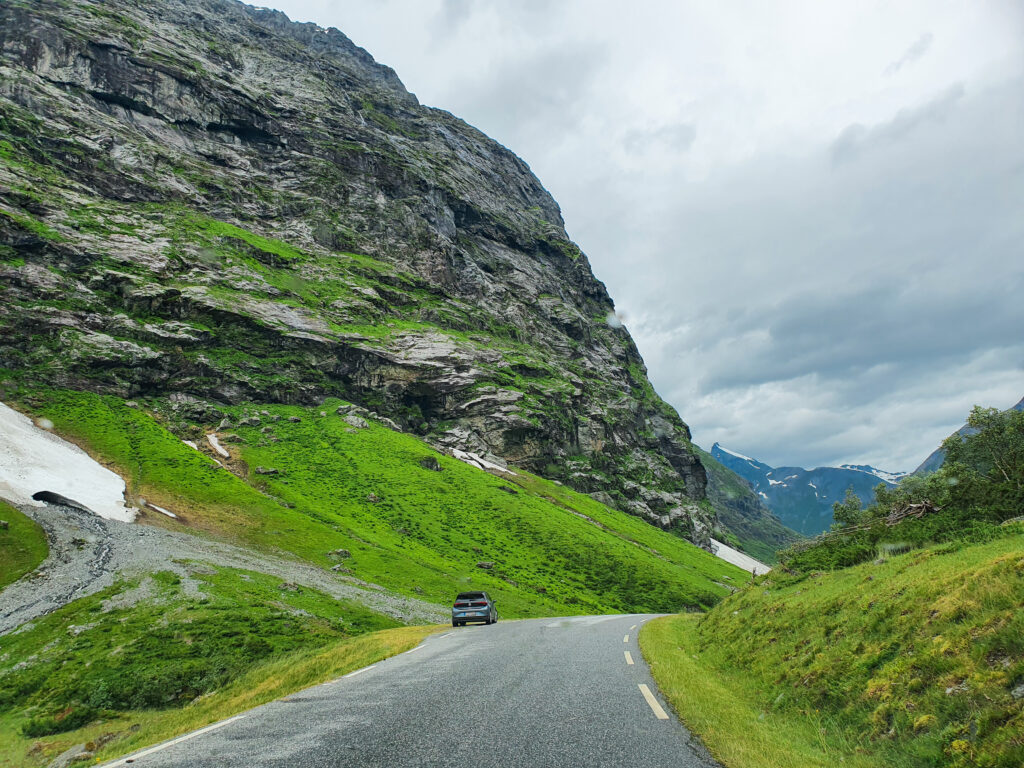

Choosing the right car for your Norway fjord road trip in summer
For most travelers, a compact or mid-size car is ideal. Norwegian roads are narrow, and smaller vehicles are easier to handle on hairpin turns and in tight village streets. That said, if you’re traveling with a group or carrying outdoor gear, an SUV or a car with extra storage might be a better option.
We rented a standard car for three people with little luggage at the Bergen airport that we previously prebooked through DiscoverCars. The rental and drop off was easy and smooth- no surprises or problems.
Make sure the car has good fuel economy-Norwegian fuel prices are among the highest in Europe. And check whether your route includes toll roads or ferries as this will be an additional cost.
If you’re traveling in spring or autumn (or in the mountains at any time), consider renting a car with all-season or winter tires. Norwegian rental companies typically equip cars with appropriate tires based on the season.
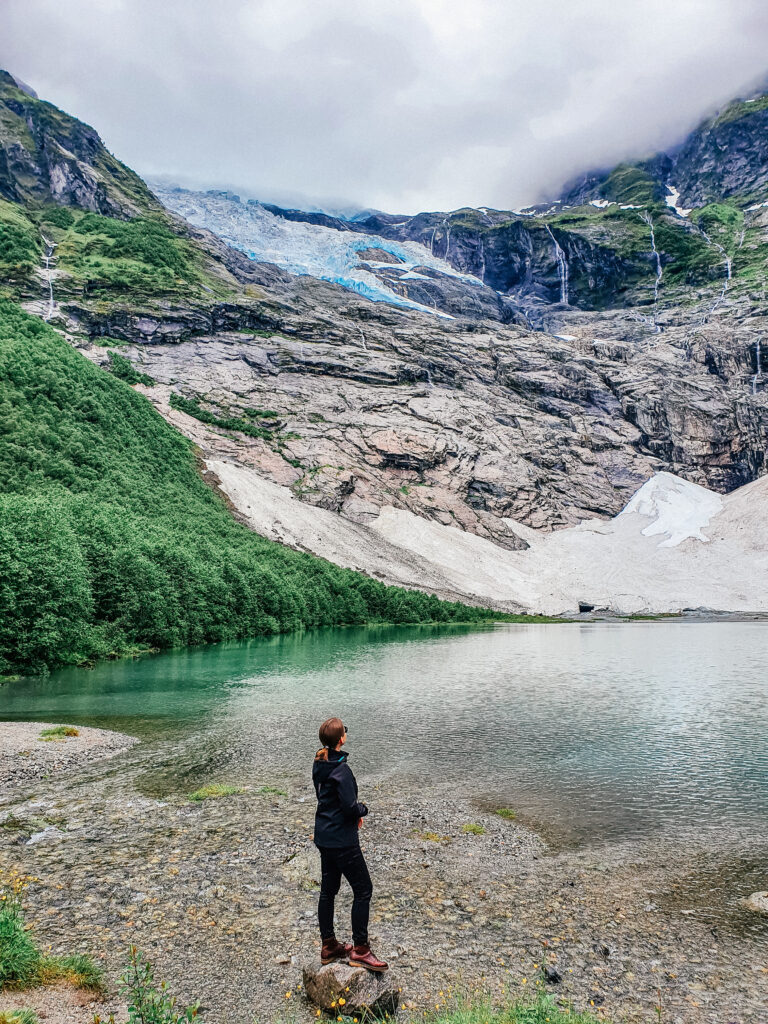
Petrol stations and electric charging points in Norway
Petrol is expensive in Norway- expect to pay anywhere from 20–25 NOK per liter (approx. 8–9 USD per gallon). Most stations are self-service and accept international credit cards. Keep an eye on your fuel level when driving in rural areas, as stations can be spaced far apart.
Electric cars are very popular in Norway, and you’ll find a strong charging infrastructure. If you’re driving an EV, apps like PlugShare and Fortum Charge & Drive are helpful for locating charging stations.
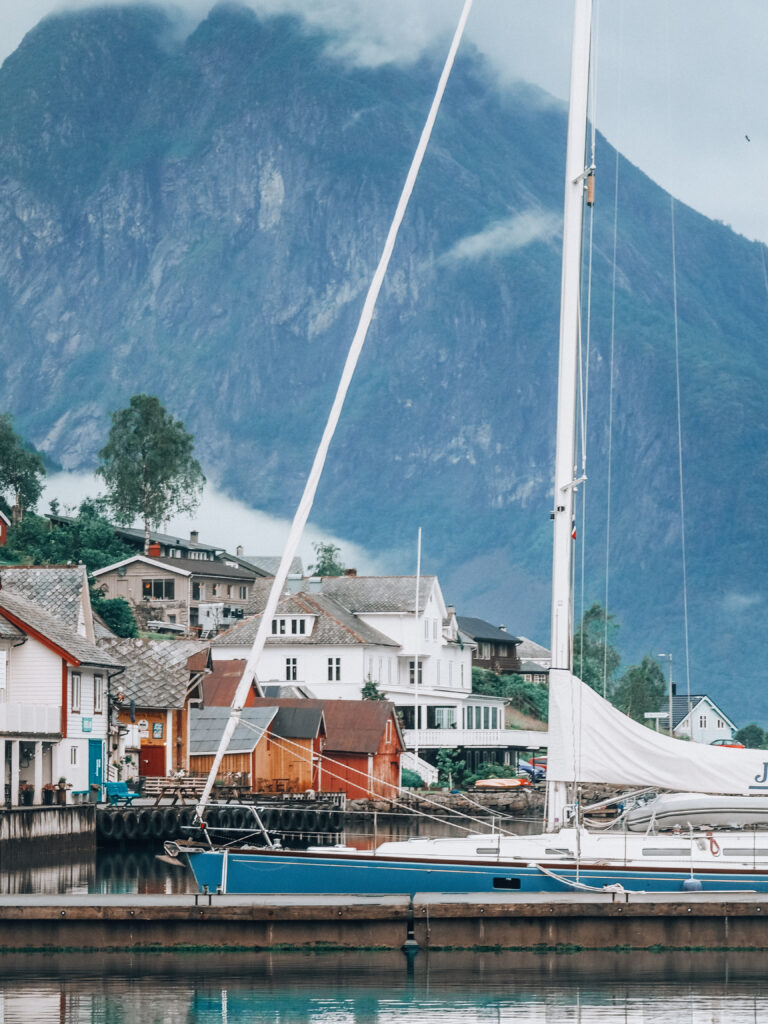
Ferries and tolls
We needed to take a ferry several times, and I guess that your fjord road trip will likely include several ferry crossings, especially in regions like Sogn og Fjordane. These ferries are car-friendly and operate frequently. No need to book in advance; just drive on, pay onboard or via AutoPASS (an electronic toll tag, see below), and enjoy the ride. However, during busy times, you might face longer waiting times. I think for us, during peak season, it wasn’t longer than an hour.
Norway also has a number of toll roads and tunnels (like really long tunnels). Most rental cars are equipped with AutoPASS tags, which automatically register toll charges as you pass through. These are billed to your rental agreement later. You don’t need to stop or pay manually- just drive through.
Ask your rental agency if your car has AutoPASS and if tolls are included or charged separately.
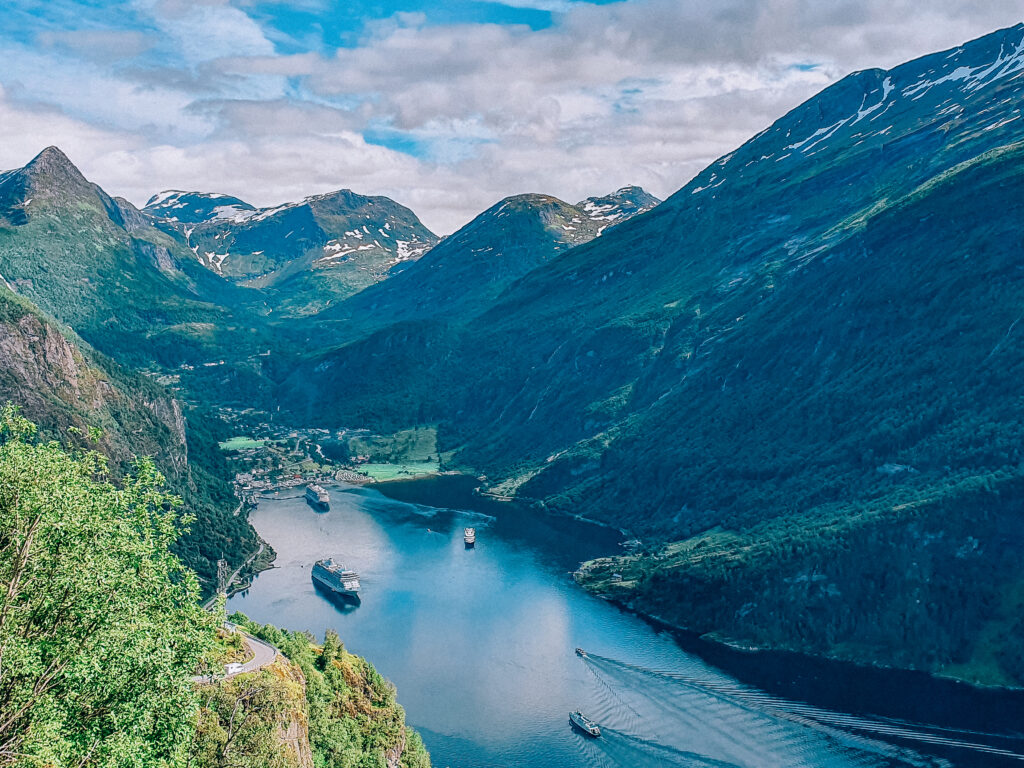
Useful apps and resources for your road trip in Norway
- Norgeskart – detailed offline maps for Norway
- Vegvesen.no – real-time road condition updates
- EasyPark – pay for parking easily via phone
- Norled / Fjord1 – ferry schedules and info
- Google Maps or Waze – reliable navigation
- WeGoTrip for audio guides to your mobile, so you can visit places while learning history and interesting facts easily and for little money.
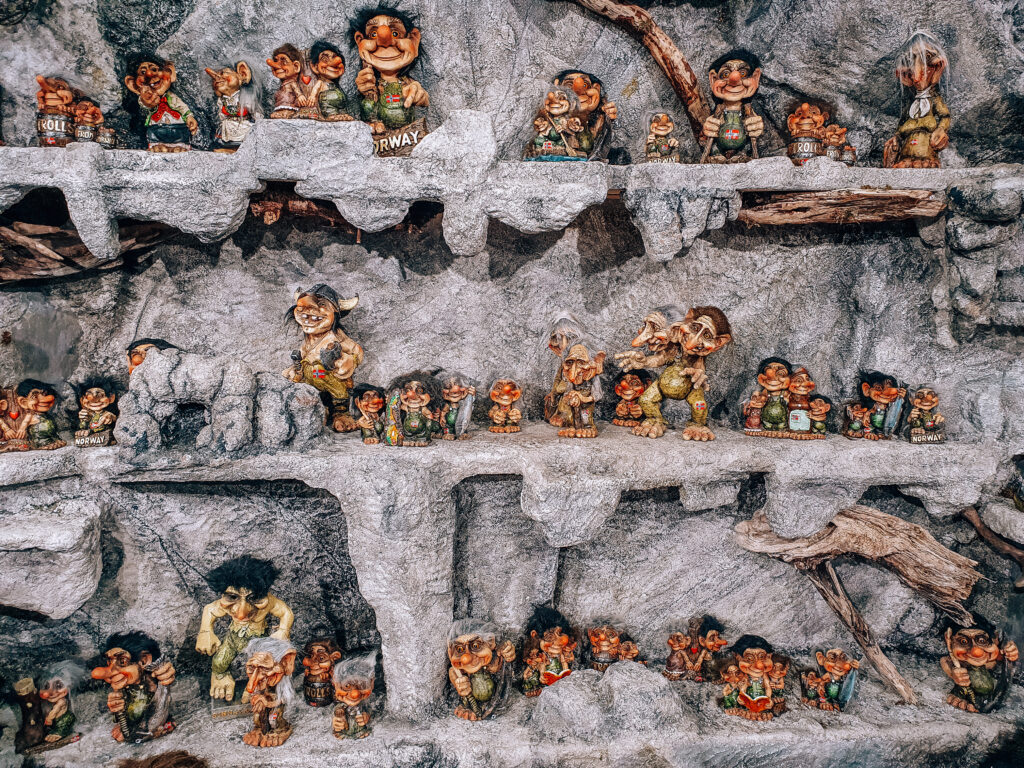
What is like driving in Norway?
Driving in Norway is relatively stress-free. Roads are well-maintained, signage is clear (and in English as well as Norwegian in many tourist areas), and drivers are generally polite and rule-abiding. It’s one of the easiest places to drive in Europe.
Speed limits are strictly enforced via cameras and spot checks, with hefty fines for violations (similarly to Iceland and other other countries). Typical limits are:
- 50 km/h in cities and towns
- 80 km/h on rural roads
- 90–110 km/h on motorways
Stick to the speed limits and always keep your headlights on, day or night- it’s the law in Norway.
Also, don’t drink and drive. Norway has one of the strictest blood alcohol limits in the world (0.02%), and the penalties are severe.

Best time for Norway fjord road trip
In my opinion, summer is the most beautiful time for Norway fjord road trip. Although Norway is stunning year-round destination, your experience will vary depending on when you go, especially if you are planning a road trip. Remember though, that in northern Europe the weather is changeable- you can have blue sky and sunshine one day and rain another. We were lucky with amazing summer condition for the whole duration of our trip except one or two days of light rain.
During summer (June to August) you’ll have the easiest driving conditions, with long daylight hours and dry roads. Spring and autumn bring more dramatic colors and fewer crowds, but also potential weather changes in the mountains.
Even though we travelled in summer with perfect weather, there was a lot of snow when crossing the mountains. Like proper wintery snow!
If you’re driving between October and April, be aware of winter conditions. Many mountain passes close, and snow or ice is common even in lower areas. Winter tires are legally required, and some rural roads may require chains. Always check traffic and road conditions via Statens Vegvesen (Norwegian Public Roads Administration) before heading out.
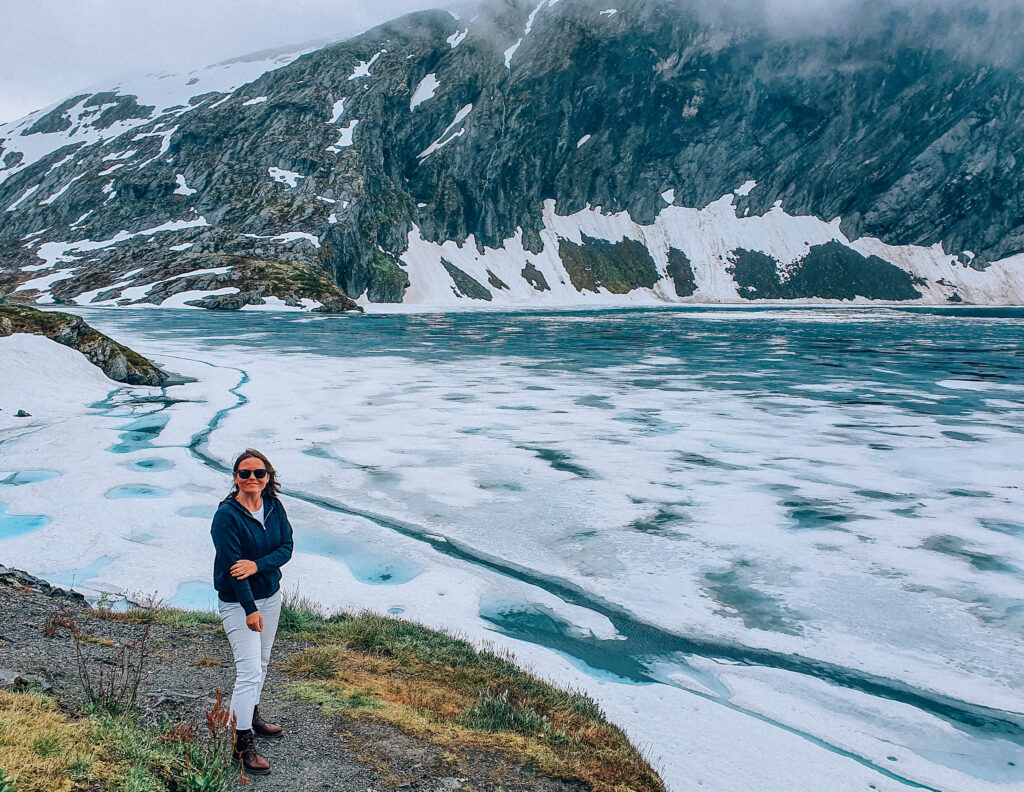
Places to see during Norway Fjords 10-day road trip
This 10-day itinerary along Norwegian fjords starts and ends in Bergen. We did not rush, but also did not stay too long in each place. I think this Norway fjord road trip itinerary is perfect to complete in 10 days. However, you’ll notice that there are many beautiful places off the planned route that you might want to visit. Norway is hands down one of the most picturesque countries in the world…and I’ve seen my share.
I hope my Norway fjord 10-day road trip itinerary and all the tips help you plan an unforgettable holiday.

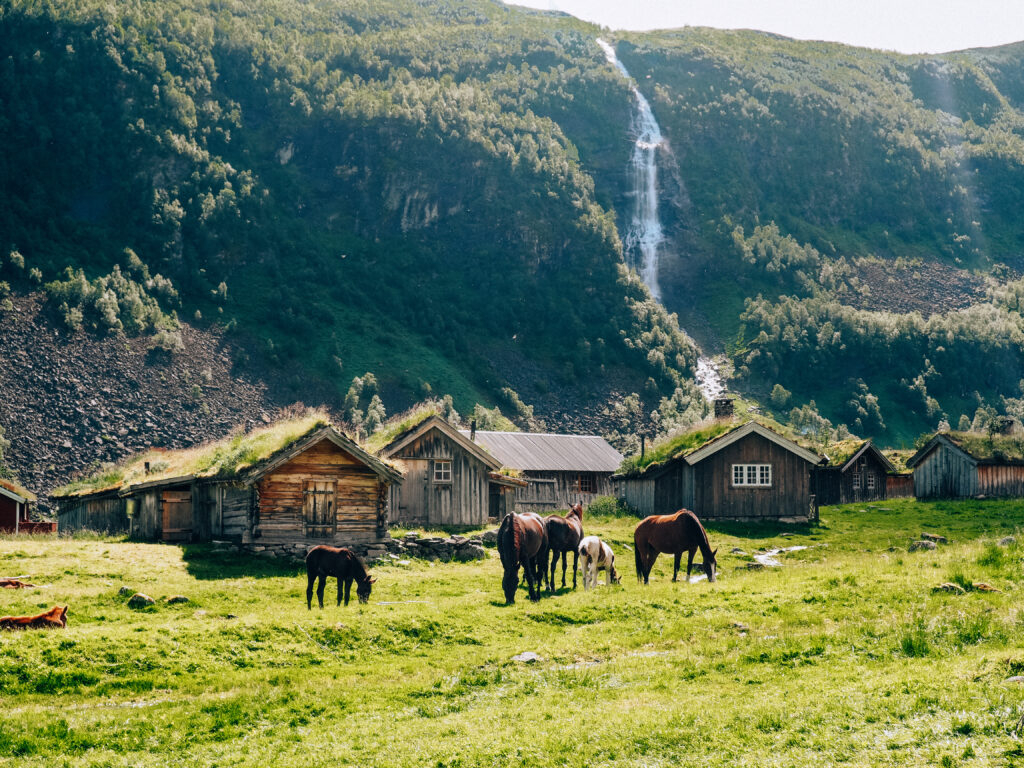
Bergen
I remember years ago, when I was still studying in Scotland, I weas dreaming to visit Bergen. It somehow seemed to me to be one of those bucket list designations. Nonetheless, I never managed to go. So, a few years fast forward, I am starting my Norway fjords road trip in Bergen.
Bergen is Norway’s second-largest city, renowned for its rich history and stunning natural surroundings. There are a few things to do in Bergen. Explore the UNESCO-listed Bryggen Wharf, with its colorful wooden houses or take the Fløibanen funicular to the top of Mount Fløyen for panoramic views of the city and surrounding fjords or Mount Ulriken.
Don’t miss the Fish Market, where you can sample local delicacies like fresh salmon and king crab. Bergen’s blend of culture and nature makes it the perfect starting point for your fjord adventure.
Restaurants to try in Bergen:
- Pinocchio Mat og Vinbar: good food in a charming, rustic atmosphere.
- Bryggeloftet & Stuene: A classic choice on the Bryggen Wharf offering traditional Norwegian dishes like reindeer stew and fish soup.
- Enhjørningen: Known for its seafood, housed in one of Bergen’s oldest buildings.
- Daily Pot: For a quick, healthy and budget-friendly option- great soups and stews. This restaurant shouldn’t be missed.
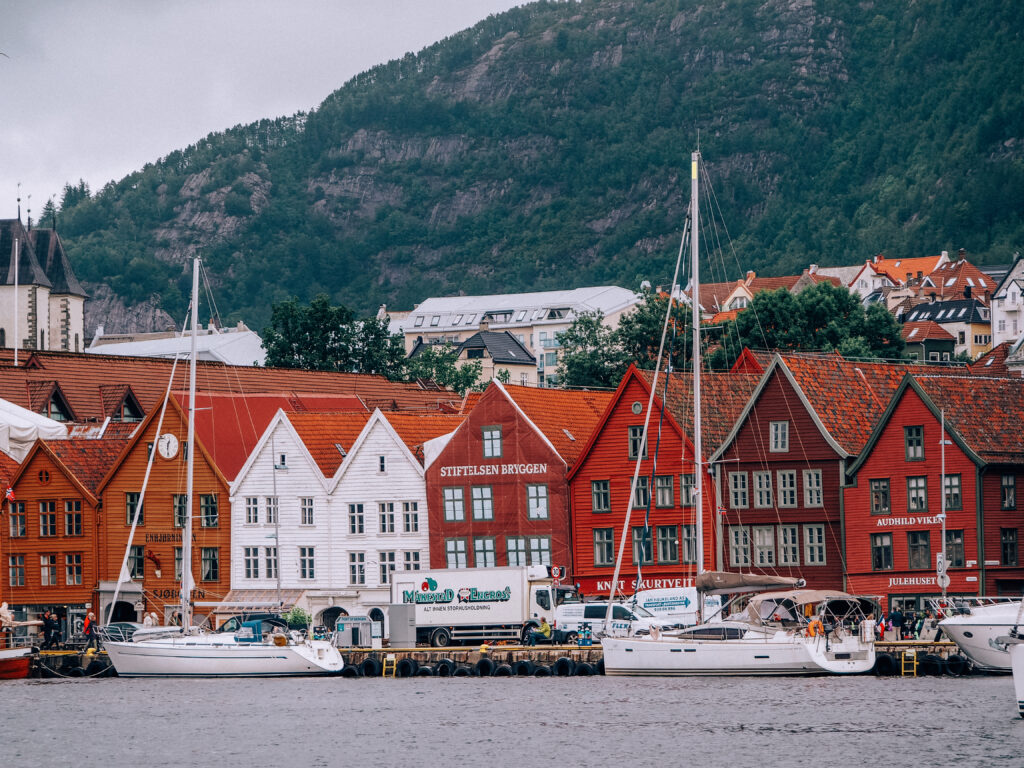
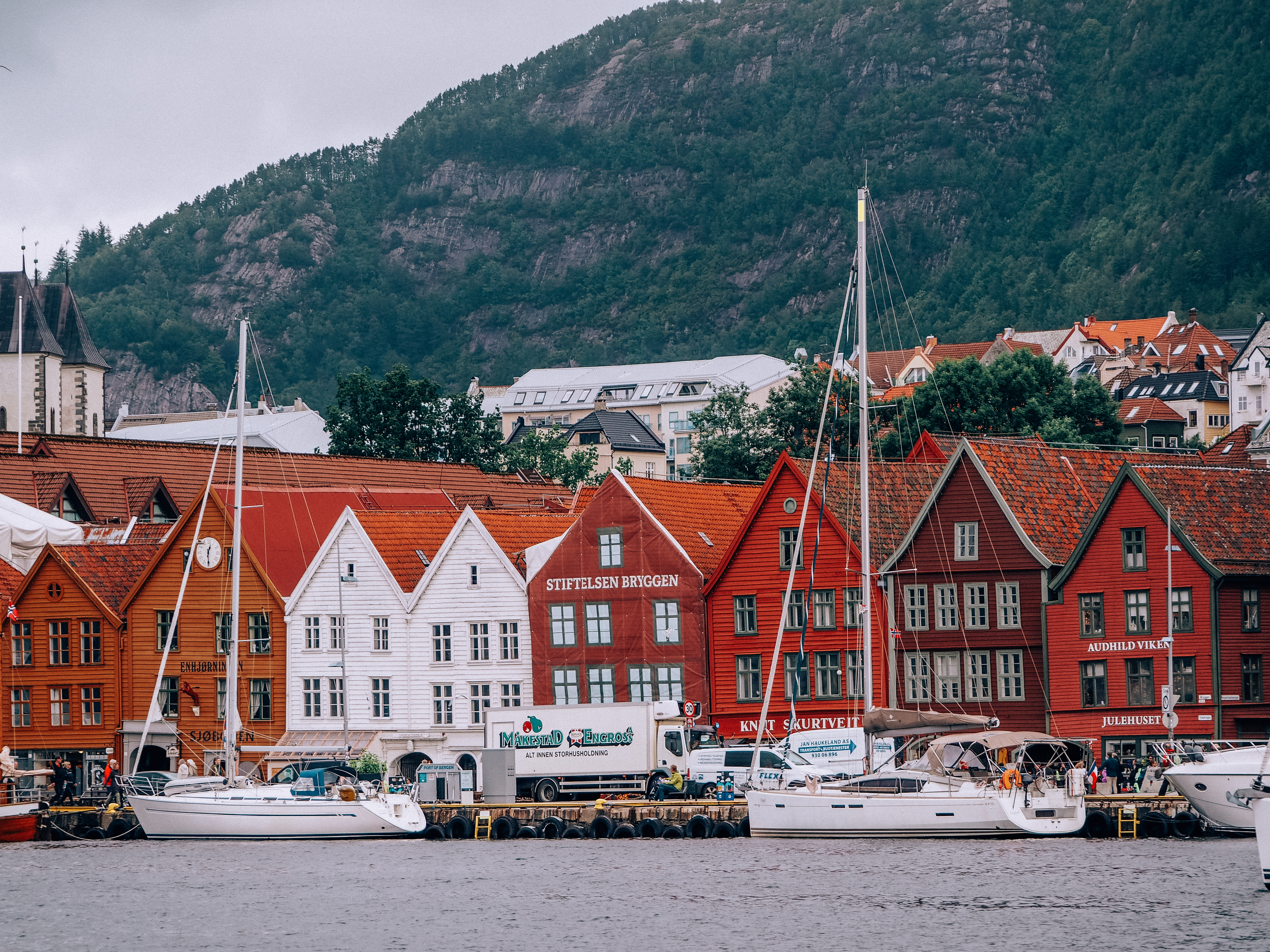 Flam
Flam
Years ago, I saw pictures of Flam in one of the travel blogs and I quickly fell in love with this little town. Now, it is mainly visited by guests from cruises, so it somehow lost the charm I was expecting. Don’t get me wrong, it is still beautiful, but the locals seemed to be annoyed with the cruise tourists just popping in for a bit, not spending much money, leaving mess and disappearing. It was crowded, but once they left, the town was peaceful again.
Nestled in the heart of the fjords, Flåm is a picturesque village known for its dramatic landscapes and the famous Flåm Railway. This 20.2 km train journey takes you from sea level to the mountainous Myrdal station, offering breathtaking views of waterfalls, steep mountainsides, and deep valleys.
While in Flåm, consider taking a fjord cruise through the Nærøyfjord, a UNESCO World Heritage site, or enjoy hiking and biking trails that showcase the area’s natural beauty. I also recommend a half-day guided tour as there are quite a few interesting places to visit.
We didn’t stay overnight in Flam precisely, but in a town not too far away in this accommodation. It’s a but remote, but the views are amazing.
Where to eat in Flam:
- Ægir Microbrewery: Viking-style brewery and restaurant with hearty food like lamb shank and burgers; great beer flights too.
- Flåm Marina & Appartement Restaurant: Stunning fjord views with great pizza, pasta and seafood options.
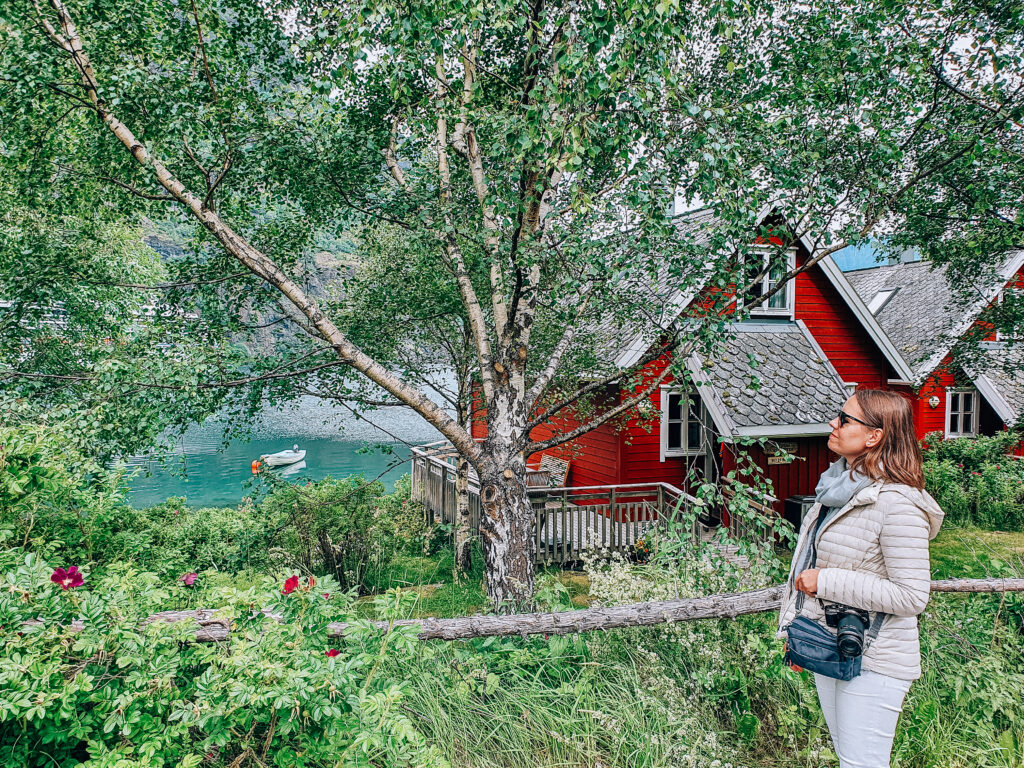
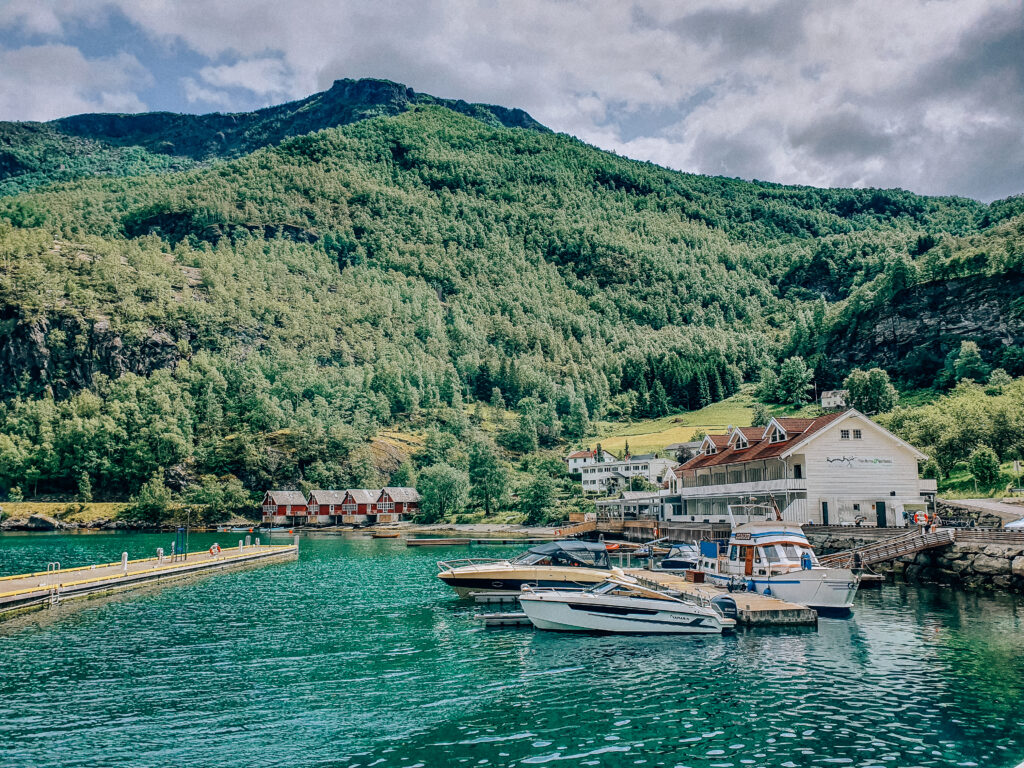
Geigenger
The village of Geiranger is situated at the end of the Geirangerfjord, one of Norway’s most iconic fjords and a UNESCO World Heritage site. Surrounded by towering cliffs and cascading waterfalls like the Seven Sisters and The Suitor, Geiranger offers unparalleled natural beauty. Take a fjord cruise to fully appreciate the dramatic scenery, or drive up to Dalsnibba for a panoramic view from 1,500 meters above sea level. The area is also known for its historic mountain farms, such as Skageflå, which can be accessed by hiking trails.
Where to eat in Geiranger:
- Brasserie Posten: A local gem with wood-fired pizzas, fresh fish, and a cozy setting by the fjord.
- Westerås Restaurant: Traditional food served on a working mountain farm with views over Geirangerfjord.
- Restaurant Hyskje (at Hotel Union): Excellent buffets and à la carte options with panoramic views.
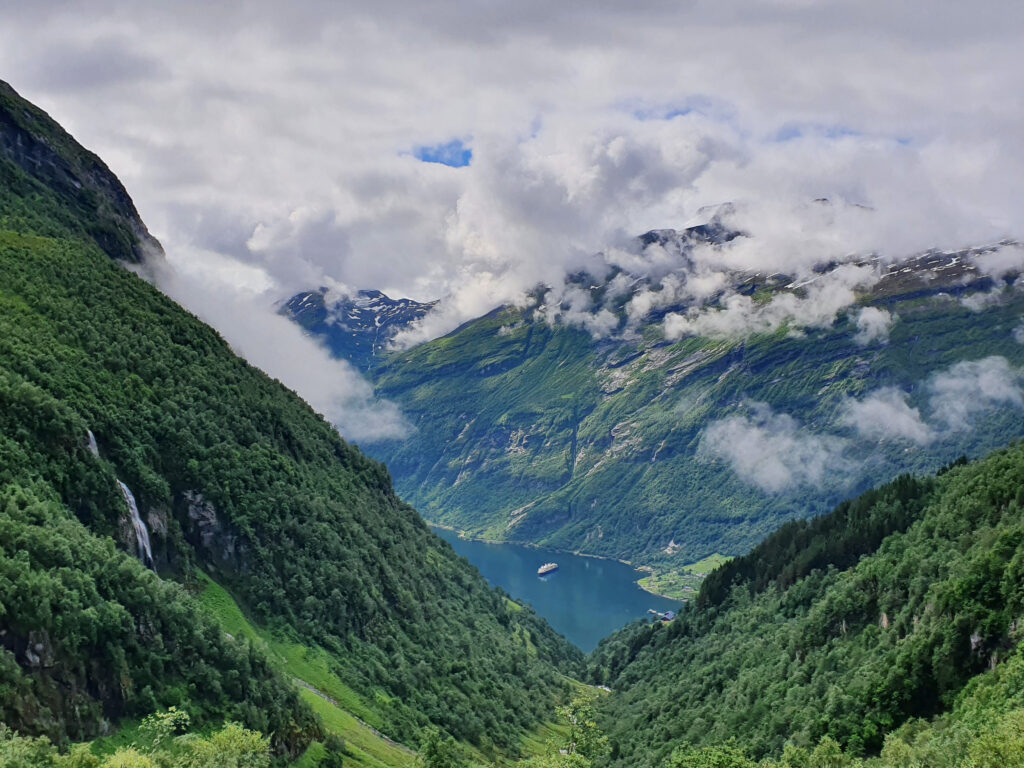
Norddal
A short drive from Geiranger brings you to Norddal, a serene village nestled between mountains and fjords. Visit the Norddal Goat Farm (Herdalssetra), where you can learn about traditional farming practices and sample locally produced cheeses. It is such a charming place; it almost looks like the time stopped there long ago. They don’t have a restaurant per se, but you can sample local goat milk products on a historic mountain farm.
The nearby Norddal Waterfall is a beautiful and peaceful setting for a picnic or a short hike. This area provides a glimpse into rural Norwegian life and is a perfect spot to unwind amidst nature.
We stayed in this apartment and quite liked it as it was located in a quiet area close to a stream with a terrace overlooking the beautiful nature (where I could have my morning coffee). I see that currently it doesn’t have as high reviews as a while ago, but for us everything was good. I also recommend this place, an absolute gem!

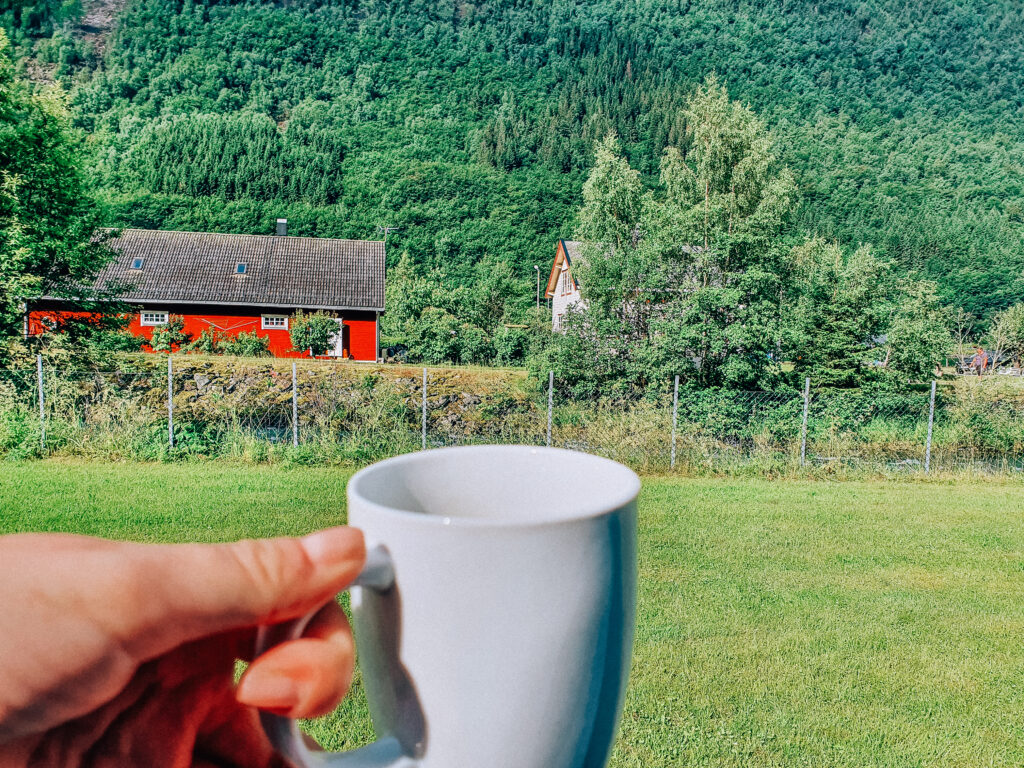
 Ålesund
Ålesund
Ålesund is a coastal town renowned for its distinctive Art Nouveau architecture, rebuilt in this style after a devastating fire in 1904.
Stroll through the town’s charming streets, visit the Jugendstilsenteret (Art Nouveau Center), and climb the 418 steps to Aksla Viewpoint for a panoramic view of the town and surrounding islands (the photo below was taken from there). Ålesund also serves as a gateway to the Atlantic Sea Park, one of Northern Europe’s largest saltwater aquariums, with marine life from the Norwegian coast.

Mundal
Known as Norway’s Book Town, Fjærland (also called Mundal) is a haven for literature lovers, with numerous second-hand bookshops set in quaint buildings. The village is also home to the Norwegian Glacier Museum, a place where you can get an insights into the region’s glacial history.
But what’s most fascinating about Mundal is that there’s more books than citizens there. It also has a beautiful waterfrong saunda and a hotel that you just must stay in.
Nearby, you can visit the Bøyabreen Glacier, a stunning arm of the Jostedalsbreen Glacier, accessible via short hikes. Fjærland’s unique combination of cultural and natural attractions makes it a memorable stop on your journey.
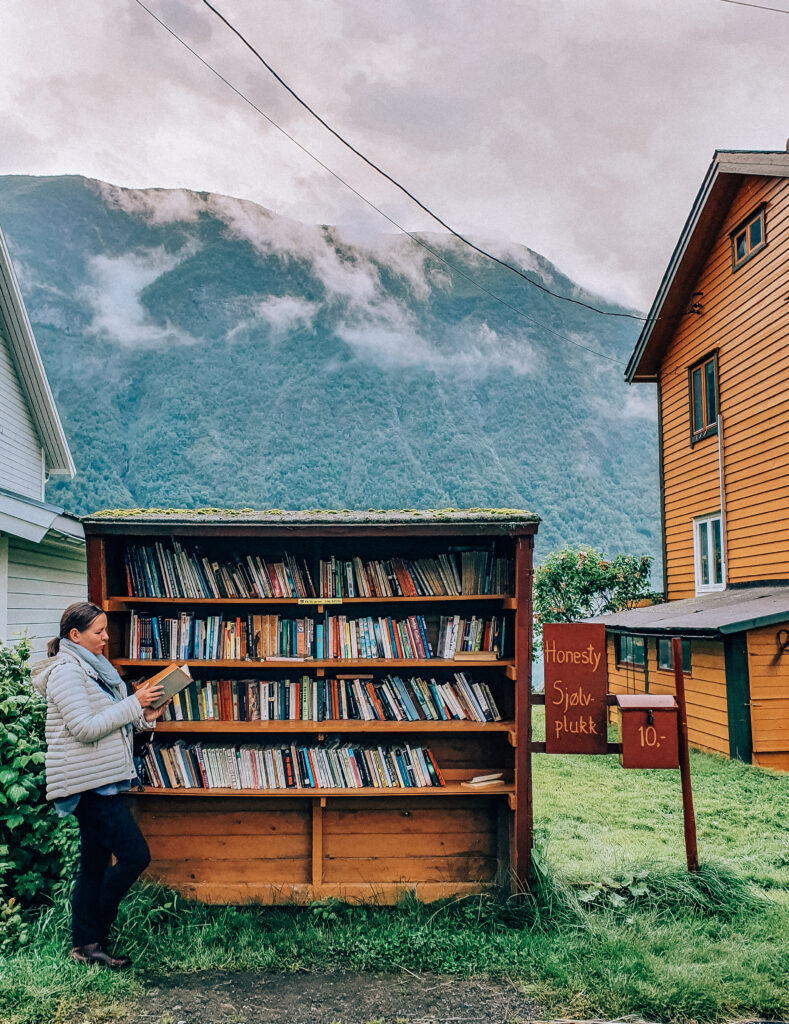

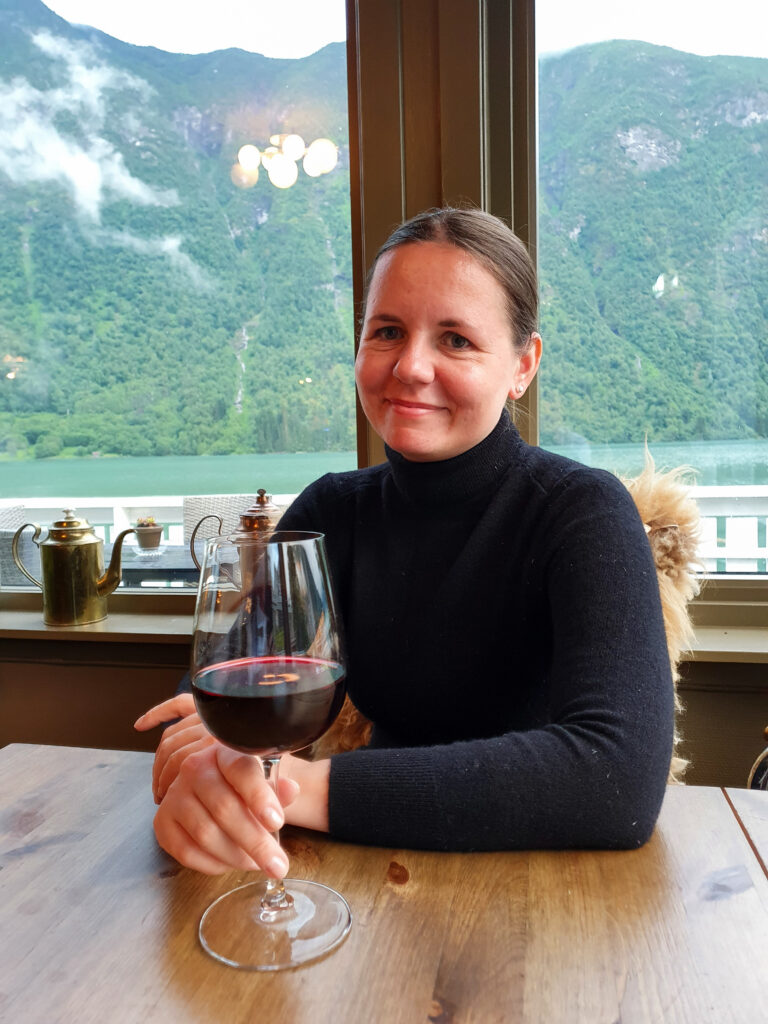
![]()
Please note that this post included affiliate links, when you decide to purchase anything through these links I get a small commission at NO extra cost to you, it helps me to keep running this blog! I only promote products and services I use or would use myself. All images are the property of Postcards from the World and cannot be used without permission.
See also:
- A quick guide to Oslo- a great city break idea
- Discovering Mundal, a hidden gem among Norwegian fjords
- 10 days in Iceland: ultimate itinerary for Iceland road trip in summer
- How to get to Iceland’s famous plane crash site.
- 15 best European road trips to take in 2025 for an epic adventure.
My top tips to have stress-free Norway fjord road trip
A summer road trip through the Norwegian fjords is truly a dream come true – dramatic landscapes, endless daylight, and charming villages await at every turn. To make the most of your journey, here are some essential tips to keep in mind:
-
Book accommodation and ferries early: Summer is high season, and popular hotels, campsites, and ferry crossings fill up fast. Reserve everything a few months ahead. You can search for hotels here:
-
Be prepared for changing weather: Even in July, Norway’s weather can flip from sunny to rainy within minutes. Pack layers, waterproof jackets, and sturdy shoes.
-
Take advantage of the long daylight: Thanks to the midnight sun, you’ll have 18+ hours of daylight. Plan hikes, drives, and sightseeing later in the evening to avoid crowds.
-
Drive carefully and enjoy the journey: Norway’s roads are winding, narrow, and often have sharp turns — but they are safe and well-maintained. Take it slow, enjoy the scenery, and be courteous to cyclists and campers. Book your car here:
-
Pack snacks and refill when you can: Remote areas may have limited dining options, especially outside of towns. Stock up on food, water, and a few treats from supermarkets like REMA 1000 or Coop.
-
Bring a power bank and offline maps: Mobile coverage is good in towns, but it can be spotty in remote fjord areas. Download maps offline before you set off.
-
Plan for toll roads and ferries: Norway’s scenic drives often involve tolls and ferry crossings. Renting a car with an AutoPASS tag makes it much easier.
-
Be respectful of nature: Norway is passionate about preserving its landscapes. Follow Leave No Trace principles, park only in designated spots, and don’t pick wildflowers.
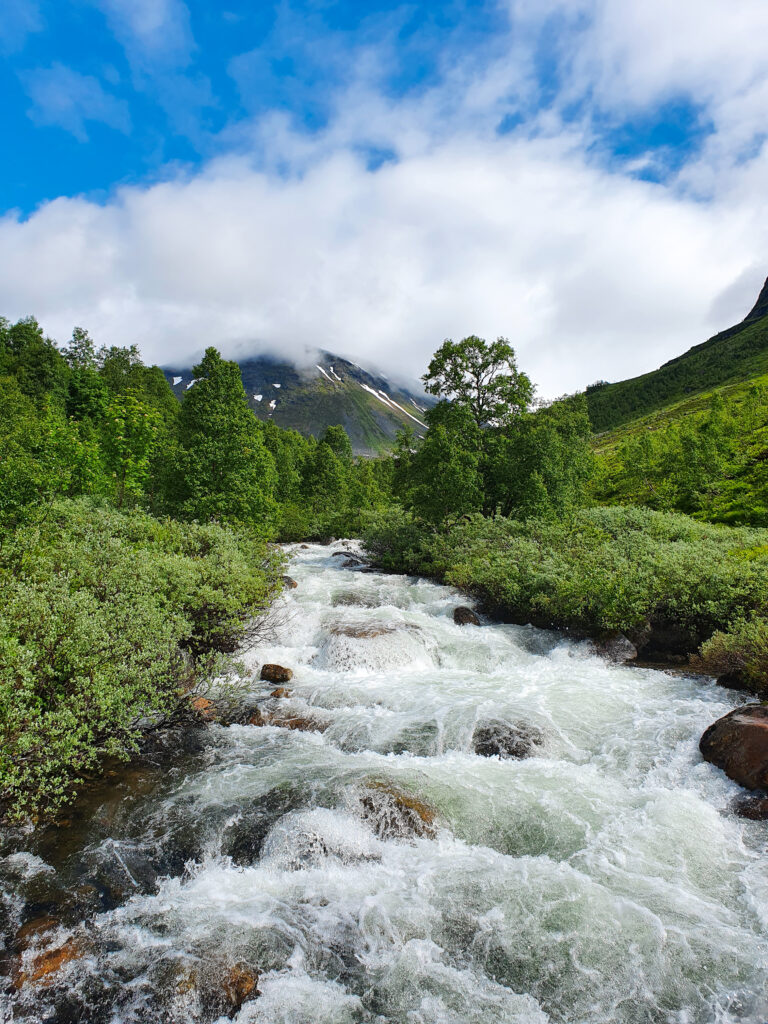
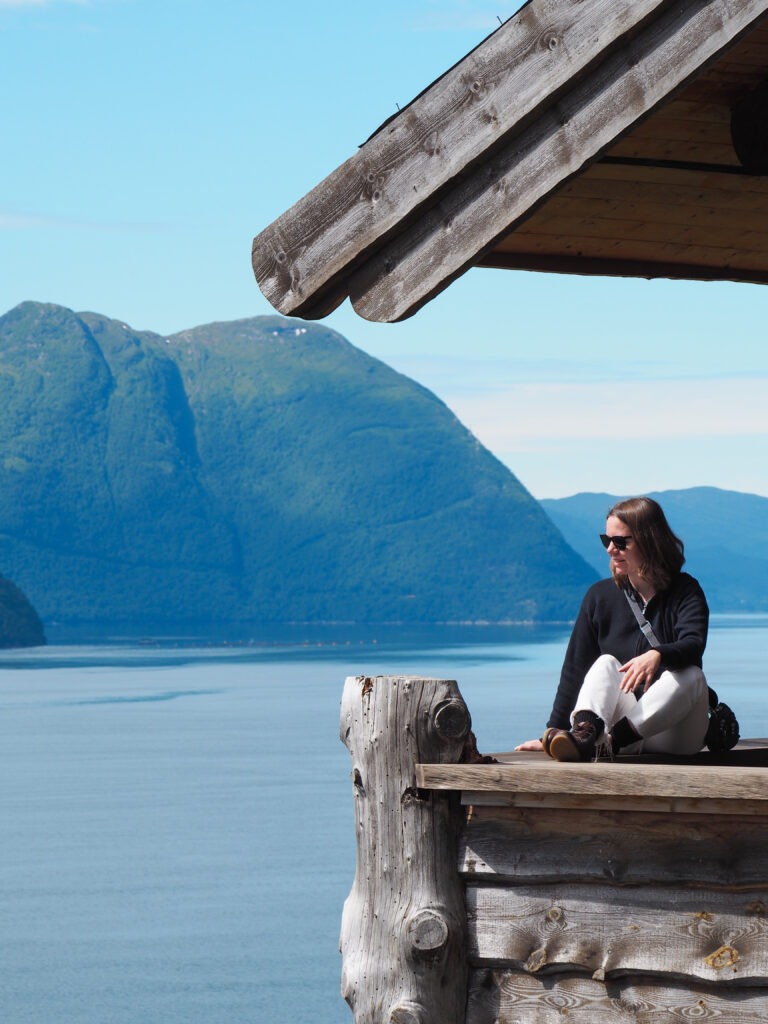
Use my favourite travel resources to plan your dream trips
- Booking.com for searching best prices on accommodation.
- Travel Payouts is my favourite platform for monetizing the blog.
- Discover Cars is a great website as they search both local and international car hire services, so you can choose the best deal for yourself. Make sure though, that the company has a good reputation and reviews.
- Get Your Guide is my place to go for searching and booking tours and excursions, especially when I travel solo.
- World Nomads and EKTA travel insurance. I like them because they have quite extensive coverage of different activities.
- WeGoTrip sends you audio guides to your mobile, so you can visit places while learning history and interesting facts easily and for little money.
- Go City is a perfect site for booking bucket list experiences and attractions all in one to avoid paying for multiple tickets. Easy and saves money. You can even save 50%.
- Trip Advisor– amazing for good quality recommendations.
- Skyscanner is a perfect website for searching flight routes and comparing prices.

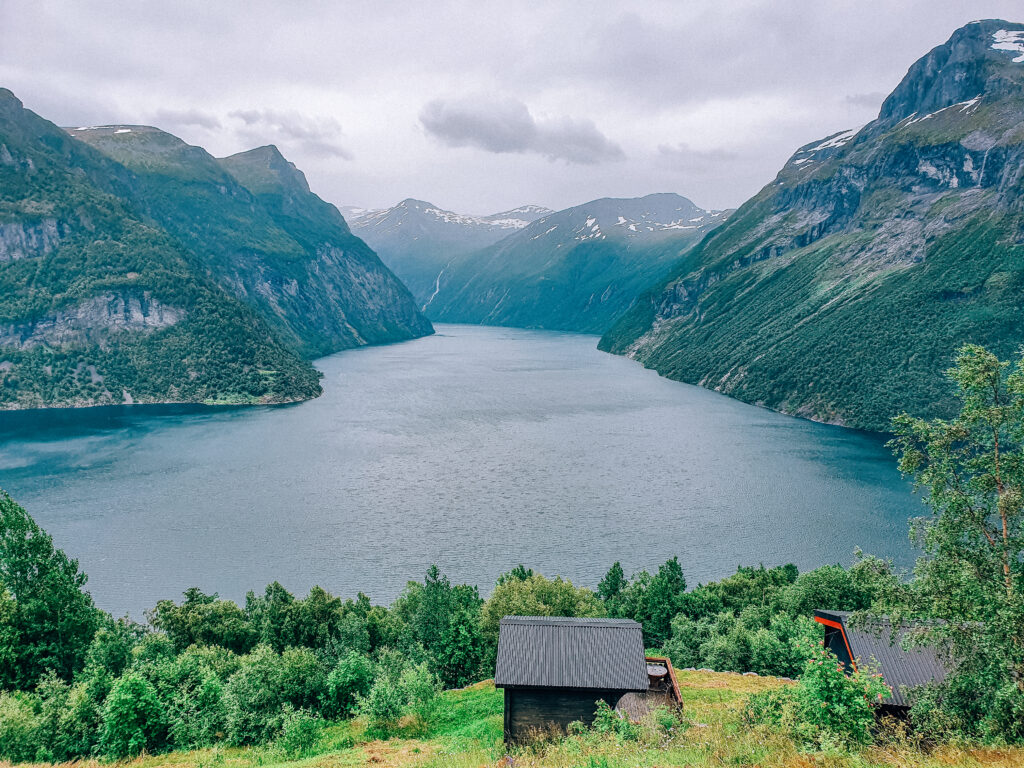
Did you like the post? Pin it for later:
